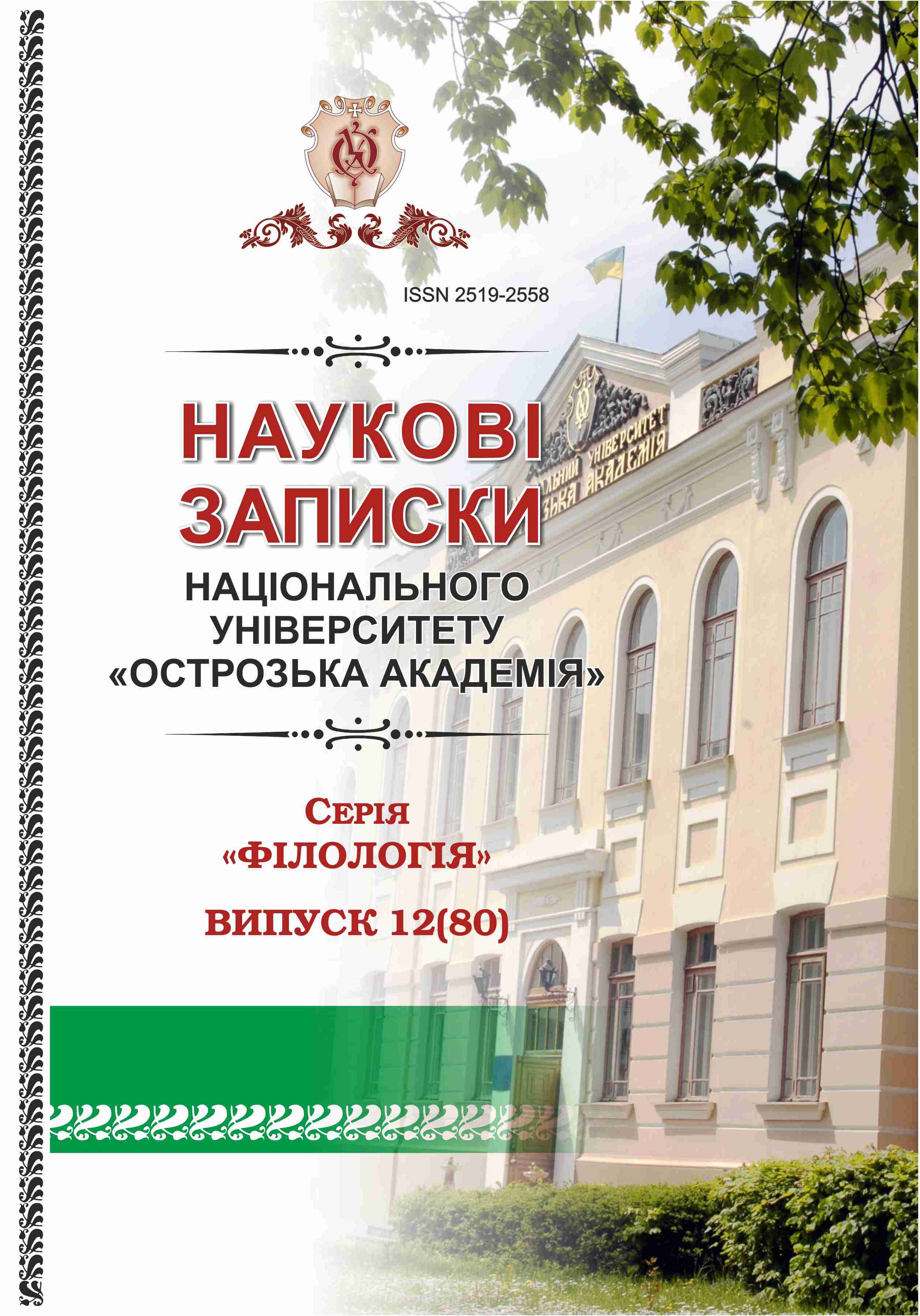LINGUOCULTURAL APPROACH TO THE STUDY OF SEMANTIC STRUCTURE OF SET EXPRESSIONS WITH ANTHROPONYMIC COMPONENTS
Keywords:
set expressions, phraseological semantics, semantic structure of set expressions, culture codes, anthroponymic components of set expressions, linguocultural approach, linguocultural conceptsAbstract
In this article a linguocultural approach to the study of phraseology through the prism of linguistic and cultural interaction is offered; the role of set expressions with anthroponymic components in the language picture of the world is determined; the theoretical and methodological bases of the linguocultural aspect of set expressions with anthromonymic components researches are studied. It is the linguocultural aspect of the study of such language units as stable expressions, which include anthroponyms, that contributes to the identification of spiritual, moral, ethical values of each separate national and cultural community, making it possible to establish the interaction of language and culture, in particular, including determining the national specifics of investigated languages, and the separation of universal phenomena inherent in them.
This research is based on the main idea of modern anthropocentric linguistics, that the human is in the focus of attention. It should be mentioned, that it is necessary to highlight the anthropocentric substratum of modern philological studies of phraseology, and their orientation on the investigating the phraseological semantics. In addition, it’s important to identify various mechanisms of the language and culture interaction on the example of set expressions with anthroponymic components, taking into account that the universal and national specific characteristics, reflected in such phraseological signs, are not fully studied (the centuries old historical memory of the nation, its psychology, mentality, social practice, economic and political structure etc.).
The urgency of this study is determined by the ever increasing interest in modern linguistic researches to the theory of intertext, in particular, to the investigation of intertextual phraseology as an actualization of linguocultural concepts in the process of concept space modeling.
The relevance of this article is defined by contrastive and typological approach to the analysis of linguistic material – set expressions with anthroponymic components, their intertextual connections and specifics of understanding. It serves to facilitate the identification of typological patterns and trends, and culturally stipulated interlingual differences of the language conceptualization expression in different ethnic groups.
The feasibility of set expressions conceptual analysis is explained by scientific interest to the theory of intertextuality as a linguistic category, which will contribute to the accession of scientific studies in intertext, hypertext, precedentness, text typology etc.

